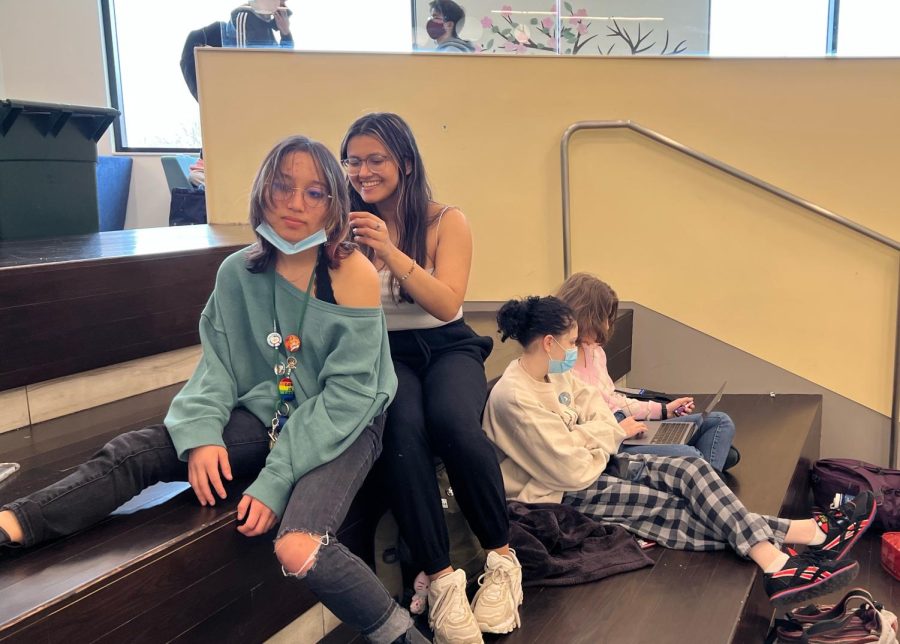Mask optional brings new energy to classes
Teachers discuss change at school, and its affect on students
Steger
Juniors Robin Remias, Valerie Partida, and Chloe Chester have chosen to go mask free while sophomore Sarah Rosenfeld continues to wear one
The mask optional decision, decided two weeks ago, brought bustling excitement and underlying nervosity to New Trier students no longer wearing masks.
On Tuesday, Feb. 22, the New Trier School Board voted unanimously to make the school to mask optional, citing high vaccination and low COVID case rates as their reasoning. This change has created concerns about the new social environment now that students could choose whether to wear masks, and how that change would affect the near two year norms COVID brought.
Some teachers, like Spanish teacher Stephanie Gamauf, worried about the new social dynamic that was created after this change of students wearing masks versus students not.
“I wanted people to be respectful of the choices people were making, and honestly, I feel like I was anxious walking in the first week,” Gamauf said, “you don’t know people’s situations, particularly around this virus.”
This issue was something addressed in Paul Sally’s email to parents and Denise Dubravec’s email to students. In both emails, they highlighted the importance of respecting others’ choices, “This is a personal choice and we all deserve dignity and respect whatever we choose,” Dubravec wrote.
Beyond concerns of respect for other students, Katherine Schindler, an english teacher, talked about the concerns for the social development, not only of students at New Trier, but kids younger. “One of the things I think that has been lost as a teacher and as a mother is our responsibility to respond to each other using facial expressions.”
Masks have become limiting in the interactions with students, both Schindler and Gamauf said, and students taking them off has brought new excitement and energy back to the classroom. As well, it has brought a long-lost understanding for students’ expressions that were hidden under a mask.
“I have felt like I get my energy from students.” Schindler said, “when masks are off, there are facial expressions. You can tell from kids’ expressions whether they understand you or are confused and whether they’re focused or not.”
The new situation has also brought new expectations for who wears their mask, and when they should put it on or take it off. Gamauf has come up with a plan for when she will wear and when she won’t wear her mask; “When I weave in and out of the students, I wear my mask, but as a foreign language teacher, it was very liberating to take it off because so much of foreign language is facial expressions.”
Some teachers have opted to fully wear their masks, like Johanna Winisky, because of out of school circumstances. “I have an immunocompromised family member,” Winisky said when talking of any concerns she had returning to school after mask optional began, “However, choosing to continue masking has alleviated my concern.”
Teachers reported that the majority of students have decided to take their masks off, but it was a gradual change. “At first most students remained masked but now that some time has passed, I see more students choosing not to wear them. I would say less than half wear masks,” Winisky said.
Gamauf spoke of some concerns she had, moving forward––specifically with spring break––she was weary of the school going back to masks required because of the traveling that occurs, and wants students to be weary of moving back to masks. “COVID isn’t going anywhere. We still have to work around it and to be willing to be flexible and pivote. We might have to pop out masks back on for some time.”







































